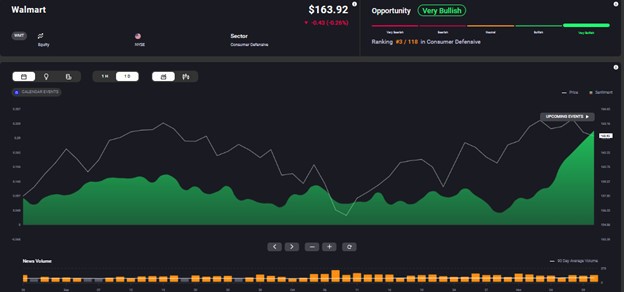Figures are Inflated: Investors were pleased with the record $9.12 billion in sales on Black Friday in the US and the even higher sales of $11.3 billion on Cyber Monday. However, these figures are not adjusted for inflation. The overall growth in sales can be partly attributed to higher prices. Nonetheless, the number of shoppers did increase in 2022, reaching nearly 198 million for in-store and in-person sales combined.
People Shop the Deals: Consumers actively look for the deepest discounts during the Thanksgiving weekend. This makes November a battleground for online sellers, pushing retailers to offer their products and services with unique deals and large discounts. So, while sales volumes surge during this period, the massive discounts offered to attract buyers has a meaningful impact on the margins of retailers.
Managing High Influx: Millions of customers plan their shopping over the five BFCM (Black Friday Cyber Monday) days. This leads to challenges in supporting high traffic volumes as well as significant logistical challenges for fulfilling orders. Moreover, as customers delay their purchases to take advantage of BFCM deals and discounts, companies run the risk of cannibalising their own sales.
Getting the Pricing Right: BFCM shoppers typically exhibit low brand loyalty, as they shop around for the best deal. On the other hand, some customers may have purchased the products even if the huge discounts were not available. Companies find it very hard to get the pricing right for their BFCM sale. With too small a discount, customers may shop elsewhere, while offering too high a discount would have a meaningful impact on their profits.
Despite these challenges, BFCM has managed to shift sales from the all-important holiday shopping season from December to yearend, giving retailers more time to clear their inventories for the next year. Some of the leading retailers begin their BFCM sales even before the turkey is in the oven. This year, Target, Walmart, Apple, Amazon, Bed, Bath and Beyond, Nordstrom, and Samsung are all running pre-sale deals to capitalise on the spending mood of the consumer.
Apart from pushing sales earlier in November, retailers have tried to create a hype around other shopping days to influence purchasing patterns, like Valentine's Day or Labour Day. Amazon, for instance, conducts a three-day event called Prime Day in mid-July. Yet, sales are concentrated in the final quarter of the year, which is considered the most profitable quarter for retailers.
BFCM is no longer limited to the US. Behind the US, Canada, the UK, other European countries, and India have the highest sales during the Thanksgiving weekend. Toys were the top-selling products on Cyber Monday in 2022, with online sales in this category spiking almost 700% compared to the daily average in October. The other hot-selling categories were electronics, computers, fashion and beauty, sporting goods, appliances, and books.
Stock Market Performance During Thanksgiving
US retail and institutional investors tend to reduce their activity in the global financial markets during this time. As a result, the Thanksgiving week sees a decline in trading volumes, especially in the US stock markets. Nonetheless, November and December have historically been the best months for the US stock market, with retail stocks getting a bump from all the shopping.
The SPDR S&P Retail ETF (XRT) tends to outperform the S&P 500 during the Thanksgiving week. The 2023 Thanksgiving week could result in a steeper rally in retail stocks, as these have underperformed so far this year. XRT has gained only 1.6% year to date, versus a 14% upturn in the S&P 500. Traders need to remember that the rally could be short-lived. Over the past 5 years, the S&P 500 has gained between Monday to Wednesday before Thanksgiving, while giving up all the gains after Cyber Monday, despite high sales volumes reported by retailers.
Also, some retailers are better positioned than the rest to attract the millions of shoppers just waiting to compare deals.
Despite footfall at stores declining almost 6% year-over-year, Walmart was a clear winner of Black Friday 2022. It outperformed rival Amazon in e-commerce sales. It witnessed a whopping 386% spike in people searching for Black Friday deals on Walmart.com. While Amazon’s stock has added 64% year to date, Walmart’s shares are up around 14%. This big-box retailer is in focus now, as reflected by the overly bullish sentiment on Acuity’s AssetIQ widget.

Amazon wasn’t even second in the list of winners in 2022. Even Target fared better. While Walmart’s US consumer sales during the Thanksgiving week spiked 6% year-over-year, Target’s grew 2%.
Lululemon, American Eagle Outfitters, Abercrombie & Fitch, and Victoria’s Secret also performed well in BFCM 2022.
Best Buy has been failing to capitalise on BFCM. Its Thanksgiving week sales have declined every year since 2019. Gap and Hollister were among the losers in 2022.
The Thanksgiving season presents attractive trading opportunities. Since Wall Street remains closed on Thanksgiving and is open for only half the day on Black Friday, trading is even more action-packed over the rest of the week, inducing higher-than-normal volatility. For the wider market, the Thanksgiving weekend serves as an indicator of consumer sentiment and an early sign of how retailers may perform during the holiday season.
